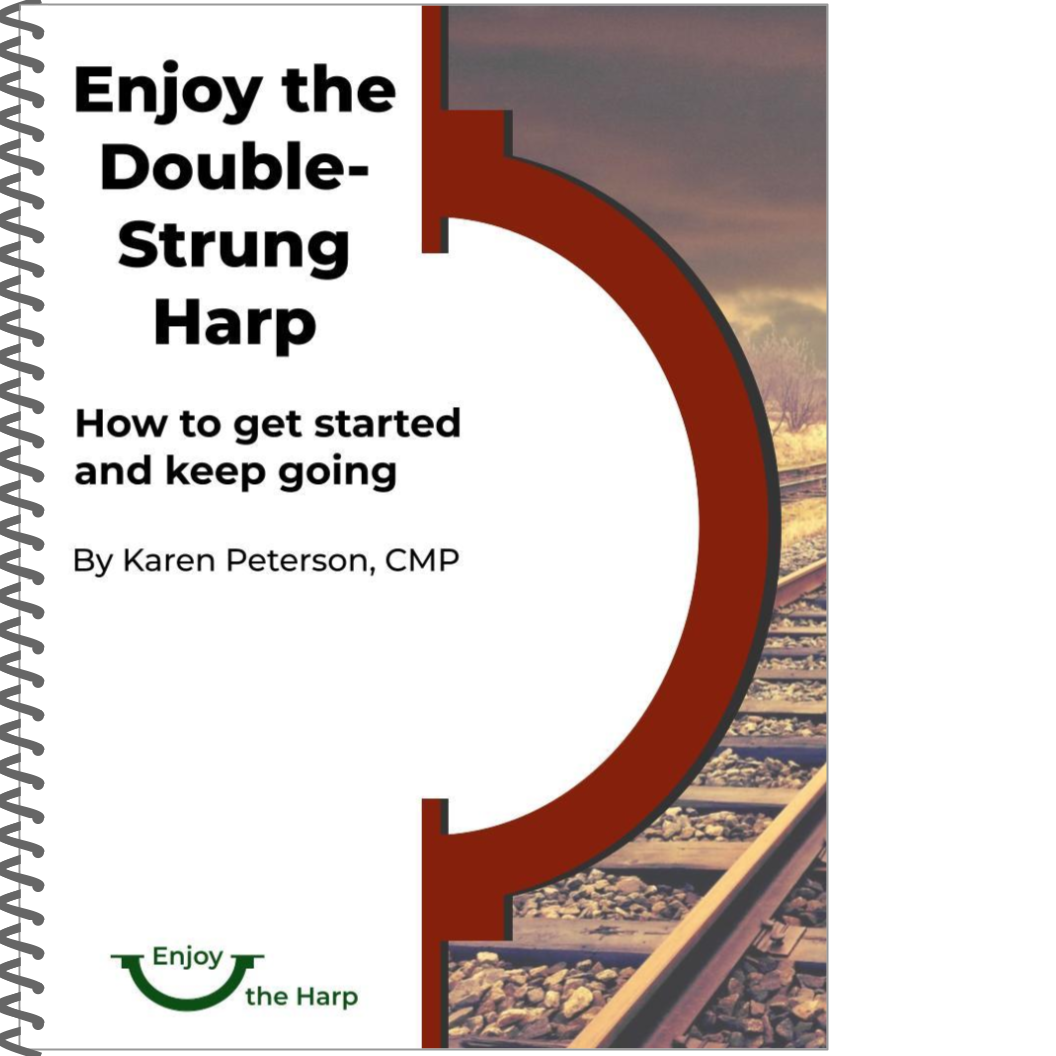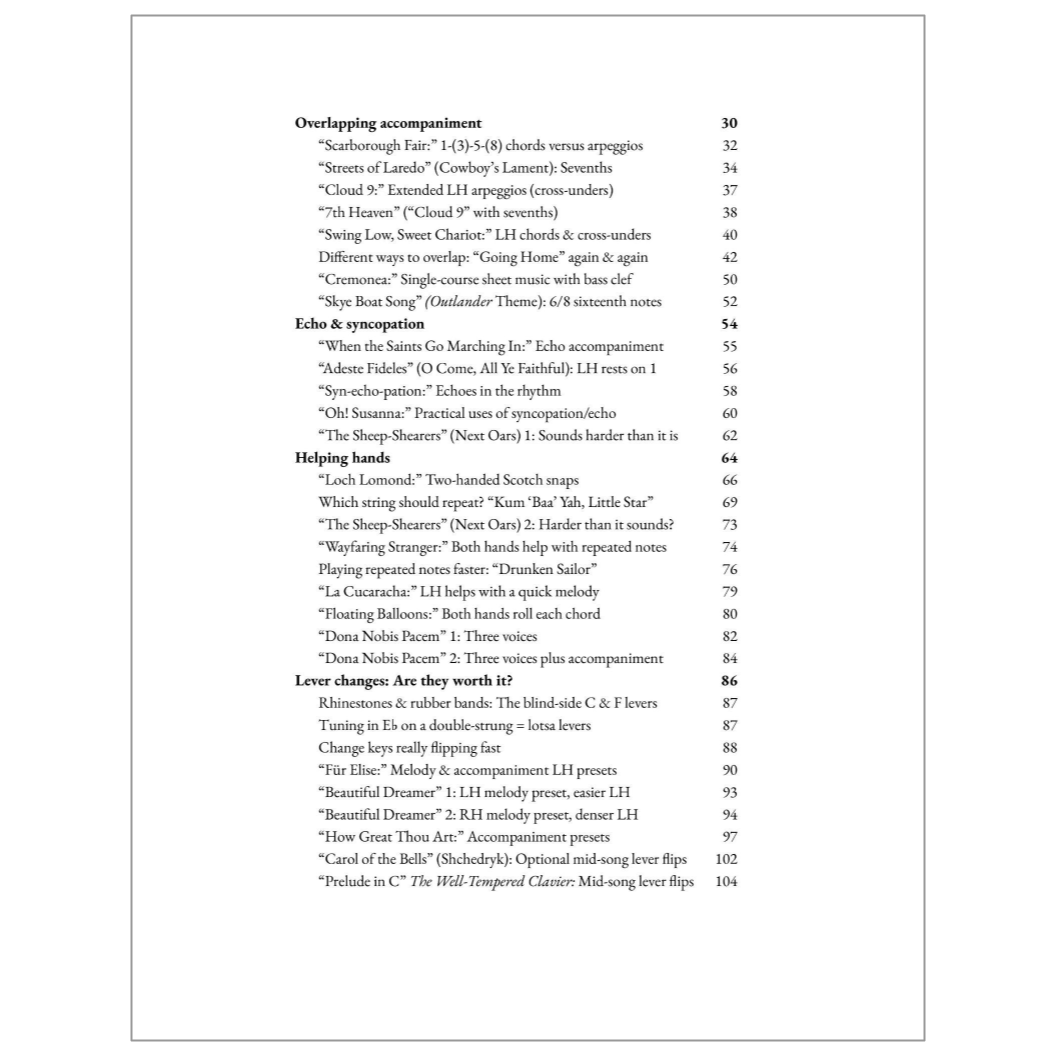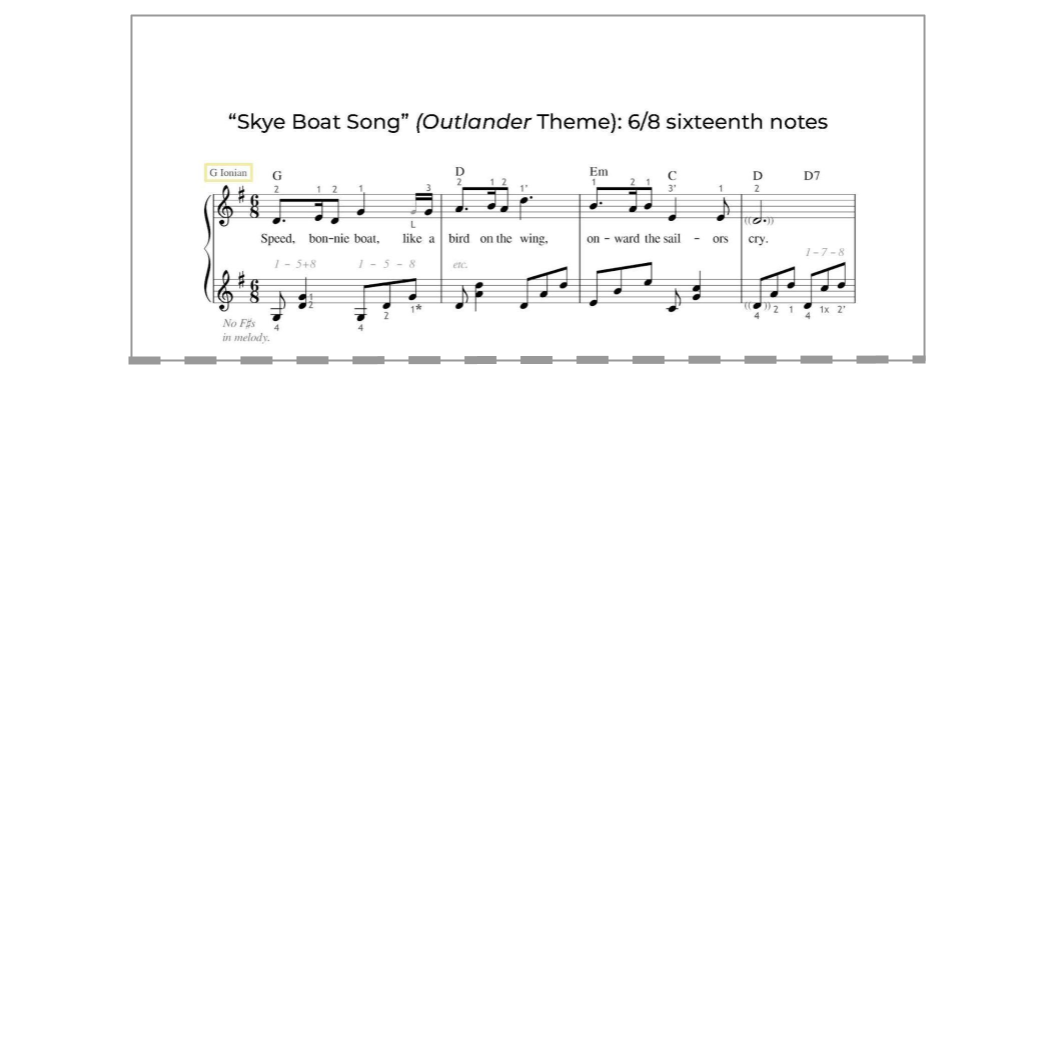Enjoy the Double-Strung Harp Instruction Book (SPIRAL-BOUND)
Enjoy the Double-Strung Harp Instruction Book (SPIRAL-BOUND)
Take advantage of the double-strung harp’s signature strengths: overlapping accompaniment, effortless ornaments, faster repeated notes, fewer lever flips. Learn with 24 real arrangements as well as 44 exercises and 7 etudes. For all levels: harp newbies, single-course players, and experienced doublers. 150 pages. Spiral-bound.
This is the U.S. hard copy version. You have two other options for obtaining this book:
Make it sound like a double-strung harp
Whether you are new to the harp or just new to the double-strung, the main question doublers have is, “How do I make it sound like a double?”
The quickest answer is to play arrangements that showcase things that can’t be done on a single-course harp or are very difficult to do on a single-course. This book has 27 arrangements and etudes, so if you just play the scores and skip the exercises and the text, you’ll already be sounding like a double.
But just leaving it at “I’ll play double-strung arrangements” will only get you so far. The next step in Enjoy the Double-Strung Harp is to read about what makes each arrangement special, and then to try that out yourself on other pieces.
Overlapping accompaniment. This is the easiest to understand and to implement, and you get the most benefits from the least effort. Every one of the arrangements involve some amount of overlap. As for implementing this technique on single-course harp scores? Start by moving the left hand up an octave, then use more ideas and explanations from the book.
Echo and syncopation. Echoing is the most recognizable double-strung effect. But how much is too much? Explore various ways to echo in four different arrangements, get tips on how to count syncopated (echoed) rhythms, and do some echo exercises.
Helping hands. With two sets of strings, the left hand can more easily get into melody or the right hand in the accompaniment to help with quick notes or just to have the sound ring out more due to less damping. Practice helping hands in seven arrangements, two etude explorations, exercises for helping with melody, and exercises for helping with accompaniment.
Preset levers. Use the second course to set the same string in sharp and natural or natural and flat. Learn which options give you the most flavor with the least effort through four arrangements—each with multiple options for how to set or flip the levers—plus exercises for flipping mid-song.
DIY: double it yourself. Analysis and explanations throughout the book show you how to take what you’ve learned and apply double-strung gorgeousness to single-course harp music, piano music, or lead sheets, like “Going Home” from Dvořák’s New World Symphony; “Ten Thousand Miles Away,” a sea song with repeated notes; “Tear the Callies,” an early version of the “Kesh Jig;” and “Shalom chaverim,” a round. There are four pages of example accompaniment rhythms in 3/4, 6/8, and 4/4 time.
...and more! There are at least 40 suggestions throughout the book saying, “try this, try that.” I know because I tallied them all up in the last chapter, your two-page, one-stop section for how to keep going.
See the full song list and a description of the exercises.
Not sure about purchasing Enjoy the Double-Strung Harp yet?
Did you know you can make the images at the top of this page bigger by clicking them? Check those out, and take a look at all the other details about Enjoy the Double-Strung Harp on the page with the full song list, description of exercises, the first chapter, and an explanation of what level of harper this book is appropriate for. If there are any other questions I can answer, please contact me.
Don’t have a double-strung harp yet? Check out my list of double-strung harp luthiers.
Want even more double-strung harp music? Here are all of the composers and arrangers for double-strung harp, including links to their social media channels and double-strung sheet music.
Not sure what a double-strung harp is in the first place? Find out what makes the double-strung harp different.
Want a lesson? Contact me for more answers over email, or set up one or more private lessons for double-strung harp, regular harp, or therapeutic harp.











